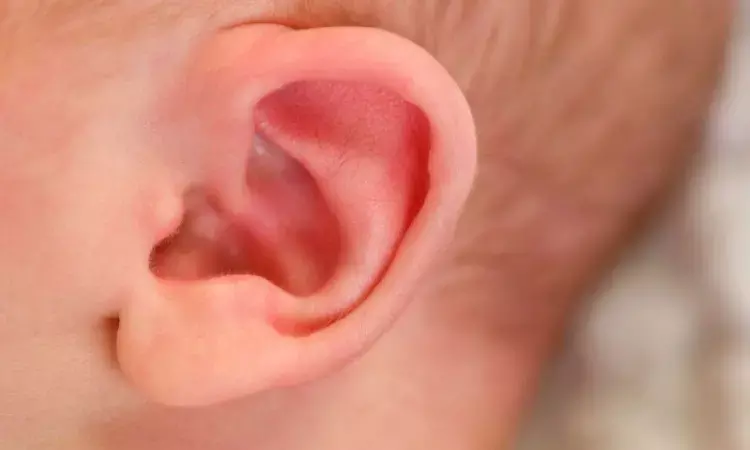- Home
- Medical news & Guidelines
- Anesthesiology
- Cardiology and CTVS
- Critical Care
- Dentistry
- Dermatology
- Diabetes and Endocrinology
- ENT
- Gastroenterology
- Medicine
- Nephrology
- Neurology
- Obstretics-Gynaecology
- Oncology
- Ophthalmology
- Orthopaedics
- Pediatrics-Neonatology
- Psychiatry
- Pulmonology
- Radiology
- Surgery
- Urology
- Laboratory Medicine
- Diet
- Nursing
- Paramedical
- Physiotherapy
- Health news
- Fact Check
- Bone Health Fact Check
- Brain Health Fact Check
- Cancer Related Fact Check
- Child Care Fact Check
- Dental and oral health fact check
- Diabetes and metabolic health fact check
- Diet and Nutrition Fact Check
- Eye and ENT Care Fact Check
- Fitness fact check
- Gut health fact check
- Heart health fact check
- Kidney health fact check
- Medical education fact check
- Men's health fact check
- Respiratory fact check
- Skin and hair care fact check
- Vaccine and Immunization fact check
- Women's health fact check
- AYUSH
- State News
- Andaman and Nicobar Islands
- Andhra Pradesh
- Arunachal Pradesh
- Assam
- Bihar
- Chandigarh
- Chattisgarh
- Dadra and Nagar Haveli
- Daman and Diu
- Delhi
- Goa
- Gujarat
- Haryana
- Himachal Pradesh
- Jammu & Kashmir
- Jharkhand
- Karnataka
- Kerala
- Ladakh
- Lakshadweep
- Madhya Pradesh
- Maharashtra
- Manipur
- Meghalaya
- Mizoram
- Nagaland
- Odisha
- Puducherry
- Punjab
- Rajasthan
- Sikkim
- Tamil Nadu
- Telangana
- Tripura
- Uttar Pradesh
- Uttrakhand
- West Bengal
- Medical Education
- Industry
Non-surgical 'paper clip technique' can treat certain infant ear deformities

Japan: A recent study has claimed that a simple and inexpensive technique can treat certain ear malformations in infants, using paper clips to build custom splints to mould the shape of the growing ear. The study appeared in the Journal of Craniofacial Surgery on March 2, 2023.
Hitomi Matsutani, MD, and colleagues at The University of Tokyo report good results with their nonsurgical approach to correcting congenital ear deformities in infants. Their experience shows the best chances of success with treatment before age six months of age.
Simple technique avoids surgery for some mild ear deformities
Between 2010 and 2019, Dr. Matsutani and colleagues carried out their paper clip technique for nonsurgical correction in 80 ears of 63 patients, average age of four months. Treated infants had relatively mild deformities: either cryptotia, a condition in which the upper ear cartilage is partially buried under the skin, or constricted ear (sometimes called cup ear or lop ear), in which the upper part of the ear is folded over.
The plastic surgeons created customized splints from paper clips, bent into the shape needed to guide the growth of the ear cartilage. After this metal frame was placed and padded with cotton to protect the skin, thermoplastic resin was packed around it, providing a mold to guide further growth of the ear. The splint was worn at all times except bath time.
In addition to improving the appearance of the ears, the technique focused on formation of the space between the upper ear and the side of the head, or "auriculocephalic sulcus"-an important structure for several purposes, including wearing eyeglasses and facemasks.
At several weeks' follow-up, the paper clip technique was highly successful in correcting congenital ear malformations. Independent ratings for before-and-after photographs by experienced plastic surgeons suggested excellent results in 36.5% of ears and satisfactory results in 73.0%.
Best results with treatment before six months of age
In most ears that were successfully treated with the paper-clip technique, an adequate auriculocephalic sulcus was created without surgery. The technique was less effective in infants with certain types of more severe deformities, including those with insufficient skin over the ear.
While ear-molding is not a new approach to correcting ear malformations, the new technique provides a simple, customizable, inexpensive alternative. The authors note that the necessary materials-paper clips and thermoplastic resin are readily obtained at less than two dollars. The article includes illustrations demonstrating the creation of the ear-moulding splint and giving examples of the results achieved.
"Early initiation of ear-moulding treatment is recommended, preferably before six months of age," the researchers emphasize. That's due not only to the malleability of the growing ear cartilage during infancy but also because older infants are likely to pull the splint out-the, most common for technique failure, in the authors' experience.
Because of the importance of early treatment, Dr. Matsutani and colleagues believe that paediatricians should check for congenital ear malformations as part of the routine one-month checkup. In any case, the researchers believe that treatment for ear deformities is best completed before children start school. They add, "When nonsurgical correction of the deformity is unsuccessful, surgical treatment would still be possible before five years of age."
Reference:
Matsutani, Hitomi, Park, Susam, Ishikawa, Yohei, Kamochi, Hideaki Nonsurgical Creation of an Auriculocephalic Sulcus in Children With Congenital Auricular Deformities. The Journal of Craniofacial Surgery March 2, 2023. | DOI: 10.1097/SCS.0000000000009180
Dr Kamal Kant Kohli-MBBS, DTCD- a chest specialist with more than 30 years of practice and a flair for writing clinical articles, Dr Kamal Kant Kohli joined Medical Dialogues as a Chief Editor of Medical News. Besides writing articles, as an editor, he proofreads and verifies all the medical content published on Medical Dialogues including those coming from journals, studies,medical conferences,guidelines etc. Email: drkohli@medicaldialogues.in. Contact no. 011-43720751


